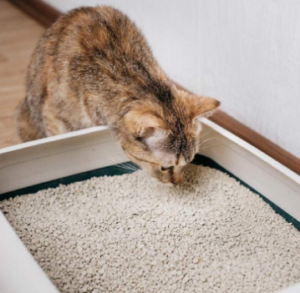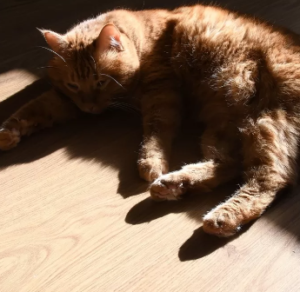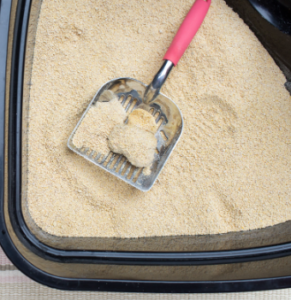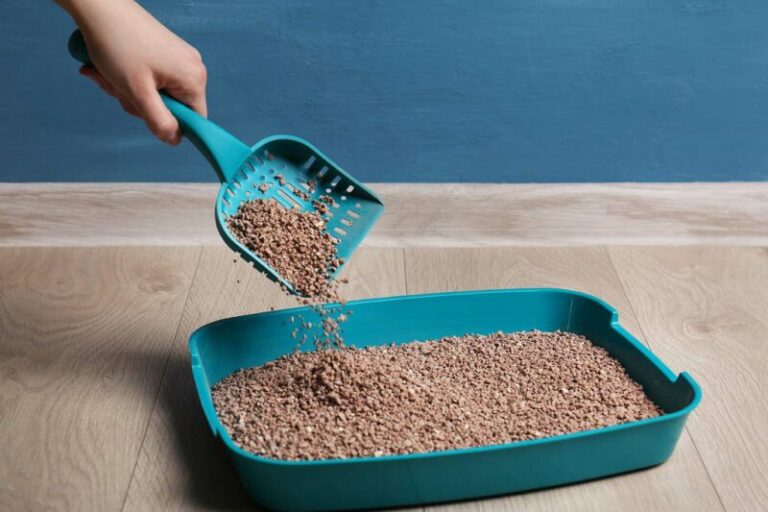Understanding the frequency of litter box maintenance is crucial for a clean home and a healthy cat. Have you ever walked into a room and been greeted by the unmistakable scent of a cat litter box that’s overdue for a change? It’s not pleasant, is it? But beyond the assault on our human senses, an unclean litter box can be more than just an olfactory offense—it can have real implications for your cat’s health.
So, how often should you really be changing that litter? Well, it’s like asking how long a piece of string is—the answer can vary. However, a good rule of thumb for clumping litter is to scoop daily and change it completely every two weeks. Non-clumping litter might need a change even more frequently. But hey, don’t just take my word for it, let’s dive into the nitty-gritty of litter types and their maintenance needs!
Types of Cat Litter

Clumping cat litter is a popular choice among cat owners for its ease of cleaning. It forms solid clumps when your cat urinates, which can be easily scooped out. This type of litter typically requires less frequent changes, but be sure to remove the clumps regularly to maintain cleanliness. On the other hand, non-clumping litter absorbs urine without forming clumps, which means you’ll need to change the entire litter box more often to prevent odors and maintain hygiene.
Here’s a quick rundown of the most common types of cat litter:
- Clumping clay litter: Highly absorbent and easy to scoop, making it a convenient option for many.
- Non-clumping clay litter: Often cheaper than clumping varieties but requires more frequent changing.
- Silica gel crystals: Super absorbent and can control odors well, though some cats may not prefer the texture.
- Biodegradable litters: Made from materials like recycled paper, wood, or corn, these are an eco-friendly alternative that can be composted.
Each type has its own pros and cons, so consider your lifestyle, your cat’s preferences, and your commitment to maintenance when choosing the right litter.
Signs It’s Time to Change the Litter

Firstly, if you notice the litter has clumped together more than usual, it’s a sign that it’s absorbing too much and needs a refresh. Another tell-tale sign is the odor. If the scent of ammonia is stronger than your morning coffee, it’s time to act. Also, keep an eye out for any discoloration or excessive litter outside the box, as these can indicate it’s time for a clean sweep. Here’s a quick checklist:
- Clumping: More clumps than usual suggest high usage.
- Smell: A strong ammonia odor is a red flag.
- Discoloration: Dark or inconsistent coloring in the litter.
- Tracking: Litter scattered around the box area.
- Behavior: If your cat hesitates or avoids the box, it might be due to dirty litter.
Remember, a clean litter box is not just about avoiding a stinky situation; it’s about your furry friend’s health and happiness. So, keep your senses sharp and your litter scoop at the ready!
Health Implications for Cats

But wait, there’s more. A dirty litter box can also be a breeding ground for bacteria and parasites. I mean, who wants to do their business in a place that’s not been cleaned, right? It’s the same for cats. Here’s a quick rundown of potential health problems caused by a neglected litter box:
- Feline Lower Urinary Tract Diseases (FLUTD): A group of diseases that can affect your cat’s urinary bladder and urethra.
- Bacterial Infections: Dirty litter can harbor harmful bacteria, leading to infections that can affect various parts of your cat’s body.
- Parasitic Infections: Parasites like toxoplasmosis can make a home in dirty litter and pose health risks to both cats and humans.
- Respiratory Problems: Ammonia from urine can build up in a poorly maintained litter box, causing respiratory irritation for your cat.
In short, keeping that litter box clean is not just about avoiding an explosive surprise for your nose; it’s about ensuring your cat leads a happy, healthy life. So, let’s scoop to it and keep those boxes fresh!
Maintaining a Clean Litter Box

First things first, scoop daily! Just like you, your cat appreciates a clean bathroom. Scooping out the clumps and solids every day prevents build-up and keeps odors at bay. But wait, there’s more to it than just daily scooping. You’ll want to completely replace the litter and clean the box with mild detergent regularly. For non-clumping litter, that’s once a week; but for clumping litter, you can stretch it to every two to three weeks. Here’s a quick checklist to help you remember:
- Daily: Scoop out clumps and solid waste.
- Weekly (non-clumping): Replace all litter and wash the box.
- Every 2-3 weeks (clumping): Replace all litter and wash the box.
- As needed: Top off the litter to maintain the recommended depth, which is usually 2-3 inches.
Remember, your cat’s litter box is their sanctuary. Keeping it clean is not just a courtesy; it’s a direct impact on their well-being. So, let’s avoid any ‘explosive’ surprises, shall we? Keep it tidy, keep it fresh, and your cat will thank you with purrs of contentment.
